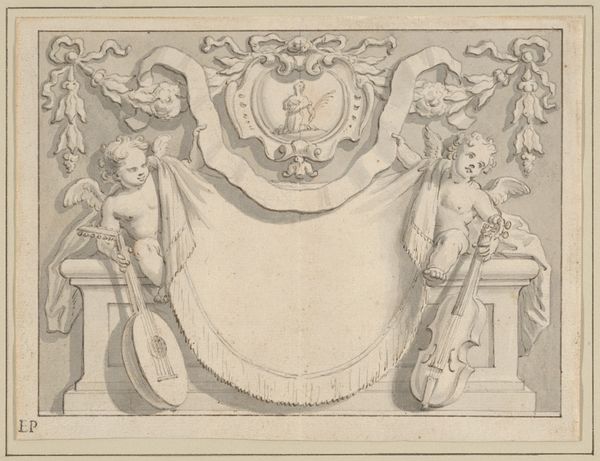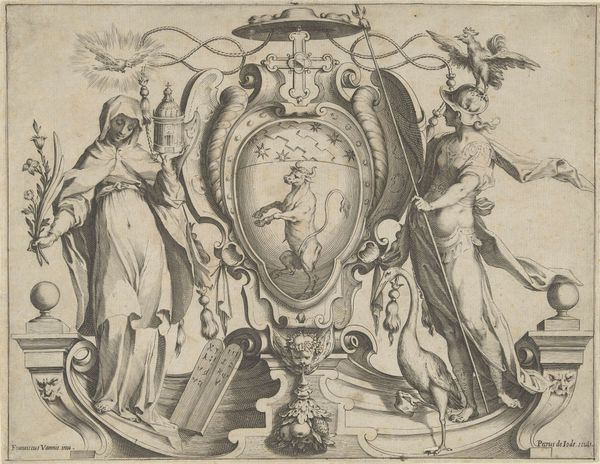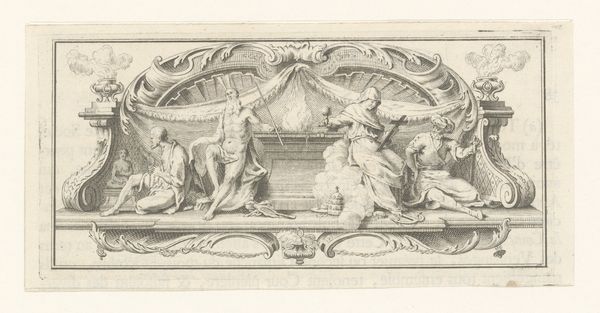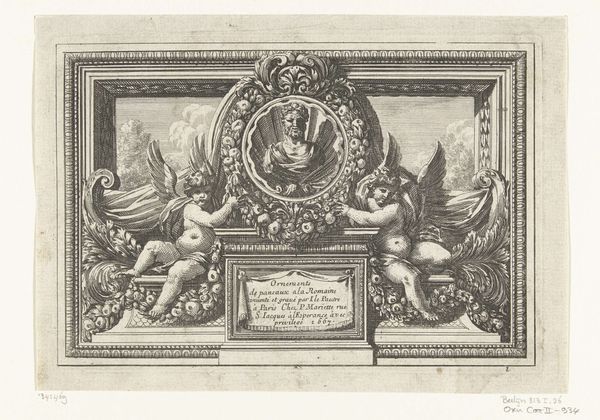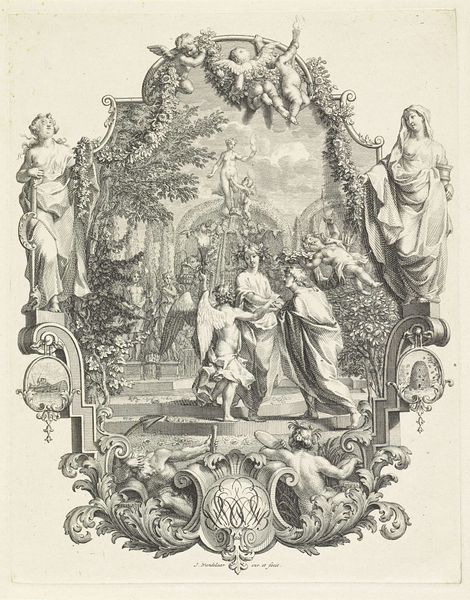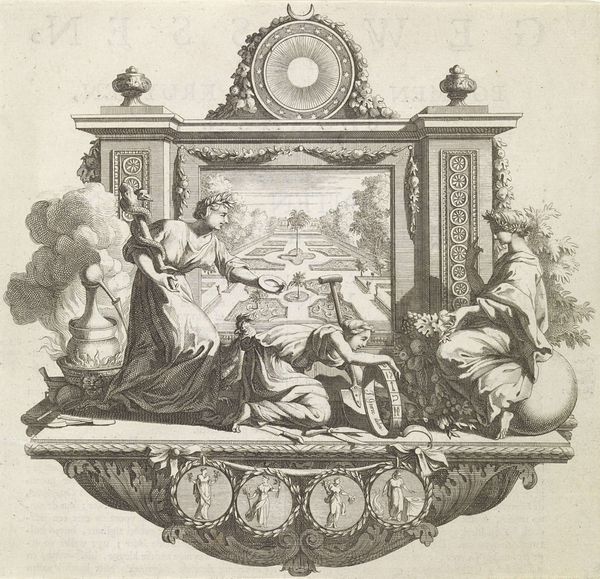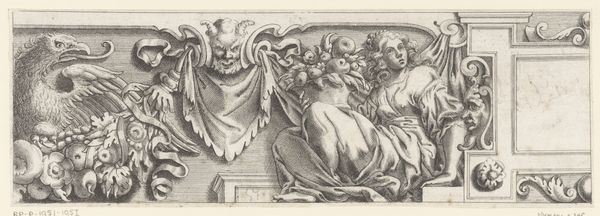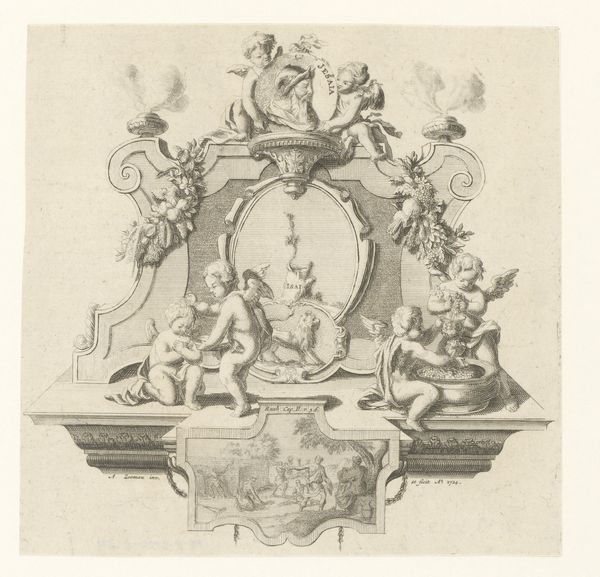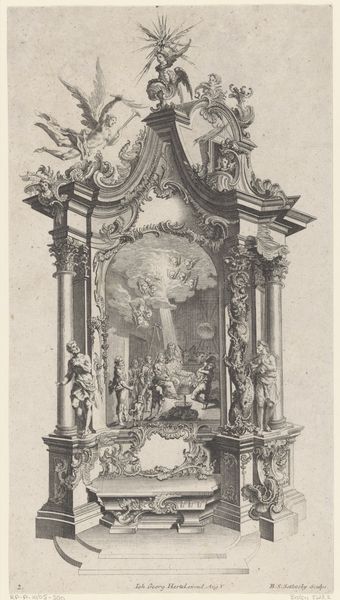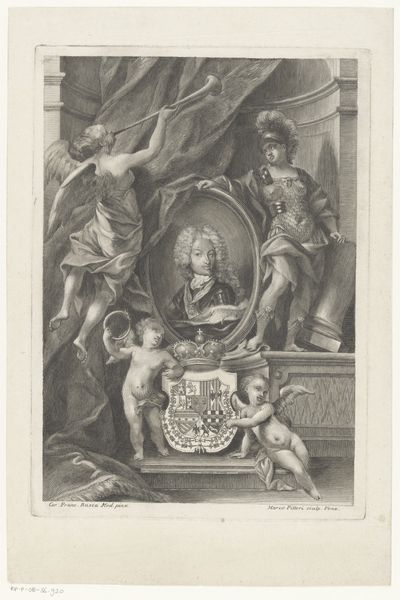
Dimensions: height 228 mm, width 399 mm
Copyright: Rijks Museum: Open Domain
Editor: This intaglio print, "Cartouche voor het wapenschild van een kardinaal," made after 1576 by an anonymous artist, strikes me as incredibly ornate. The level of detail in the figures and decorative elements is astonishing. What structural elements jump out to you? Curator: The symmetry is paramount. Note how the composition is anchored by the central cartouche. The flanking allegorical figures—a crowned male on the left and a winged female with a serpent on the right—mirror each other, creating a balanced visual rhythm. The cupid figure at the centre directs your gaze to the escutcheon, can you see how effectively the space has been composed through allegorical balance? Editor: I do. The winged figure seems to contrast with the snake. Are these design elements there to show the viewer something in particular? Curator: Precisely. This asymmetry introduces dynamic tension, a vital Baroque element. Look closely at the pen work, how each stroke contributes to the overall texture and tonality. Are the contrasting light and dark spaces strategically arranged? Editor: I would argue that it does indeed create visual tension through high contrast in order to catch the viewers eye, the engraving truly directs the viewers gaze toward key narrative aspects. That said, do these compositional elements denote something deeper? Curator: Potentially. We have identified a formal, internalised method to reading it. However, such speculations without further contextual knowledge remains tentative, since we are dealing with an escutcheon; an important, identifying item in the sixteenth-century. Editor: You've illuminated so much through a purely formal analysis. Now I see the power of understanding visual language. Curator: And I am reminded of the limitations of formalism without contextual considerations. A constant process of dialectical visual analyses is necessary in our craft.
Comments
No comments
Be the first to comment and join the conversation on the ultimate creative platform.

